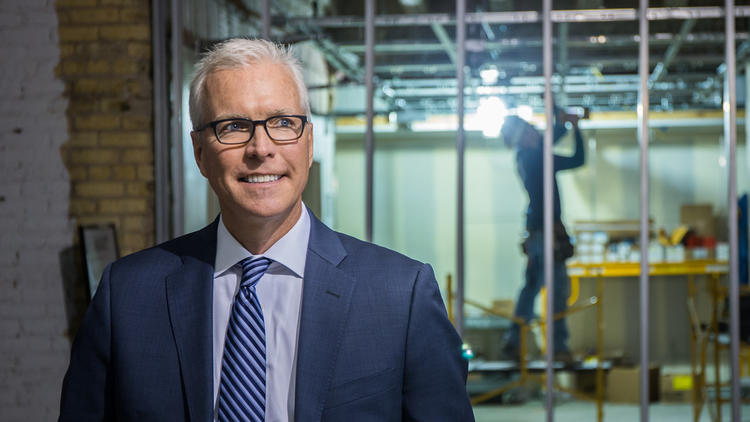
Media Training: Last Minute Tips for Your Interview
I know firsthand the value of media training and how it helps alleviate some of the pressure spokespeople face as they prepare to go on the record. Private or public, and regardless of industry, being well prepared for a media interview can sometimes be the difference between improved ratings and a drop in valuation.
It can take weeks, even months to line up an interview for national coverage, but great opportunities can also come out of the blue. To ensure you and your top spokespeople are prepared to jump in when a great opportunity arises, it’s important to think about media training as an always on function of your PR department.
Last Minute Tips for Nailing a Media Interview
Since you’re here, you must have been identified as the right spokesperson for this opportunity. Time to clear your calendar and review your talking points. It’s showtime. To help you tackle your next big moment, following are a few tips to help you get your head in the game.
Tip 1: Silence is your friend. Seriously, time and time again, this is the best advice I ever received. Say what it is you need to say, then wait. Even if you’re met with silence on the other line or it permeates the room. Someone will fill the space. So if you’ve said what you needed to say, you don’t need to (and probably shouldn’t) say any more. Let the journalist move on and ask the next question.
Tip 2: The rule of 3. Think of classic examples like: The Three Little Pigs, Three Stooges and The Three Amigos. Or when it comes to media, why are networks and sport leagues using just three letters CBS, NBC, ABC, MTV and NBA, NHL, NFL to name just a few? Because there is power in three. So when it comes to delivering your message, think of the top three points you’d like the journalist to walk away with. And that is it. Don’t try to cram everything into this one conversation. People are programed to learn and remember in threes. If they can’t remember it, they can’t act on it.
Tip 3: Don’t repeat a bad question. Sometimes you may find yourself repeating a question, or part of a question, as a tactic to buy you a few extra seconds while you mentally compose your response. But what if a reporter asks you a bad question? If you use their words, you’ve just gone on the record. Don’t get caught saying anything that can be used in a sound byte out of context. Instead, try pausing briefly to gather your thoughts and then address their question.
Tip 4: Your PR team is your friend, not the journalist. Anything you say is on the record, even if you say, “off the record.” Trust me, I learned the hard way. You may hate the idea of having another person in the room, but invite a trusted PR leader anyway. Or have them dial-in to the call with you. They do not need to make a comment (although you should let the editor know they are also present) but they can and should be taking notes so they can follow up on any questions or comments you make. They can also add further comments on any specific points you’d like to clarify.
Tip 5: Stand up and smile. Obviously if you’re in a live interview you may not have a choice (and you’ll want to smile appropriately) but, even if you’re doing a phone interview, you should stand and try to smile while talking. This will open up your diaphragm making it easier for you to breathe which will help you manage your nerves. And smiling? Well there is plenty of research showing that smiling while you’re on the phone makes your tone sound friendlier and more positive. If you’re a public company talking to an analyst you may feel funny in front of your IR team, but I’m sure you can see the benefit here. Especially when trying to portray confidence in your numbers.
Tip 6: Know your audience. Who is interviewing you? Have you read any of their recent articles? If not, find a few and scan them. Get to know who you’re talking to and the outlet they’re working for. Pick some of their latest titles and scan them, no need to get buried in the weeds. You’re looking for the journalist’s position on relevant topics and their style of writing. This can tell you a lot about how to engage.
Tip 7: Talk to the interviewer. When you are being interviewed on-camera, ignore the camera. That’s right, don’t look at the camera but speak to the person interviewing you. (If you’re giving a satellite interview, pick a spot just to the right or left of the camera lens and focus here.) To help manage any nerves, keep feet planted on the ground or cross your feet at your ankles. Use your hands sparingly and when not in use put them casually on the top of your thighs (or the table if there is one – score!) A good interviewer will often spend a couple of moments in small talk before going on-air. Use this time to settle in and get comfortable. But not too comfortable, remember tip three.
Getting Comfortable with Media Training
Even for the most seasoned executive, going on the record can still be an intimidating and humbling experience. This is especially true when there is new material or mounting financial pressures to communicate. It may appear like some executives are more “natural” spokespeople, but I guarantee this kind of confidence only comes after a lot of practice.
When you know what you want/need to say, you can turn your focus on moving seamlessly in and out of these key messages. The good news is, being comfortable in a media interview is definitely a skill you can improve over time. You only need to let go of the fear of failure and carve out time for media training. Good luck!






